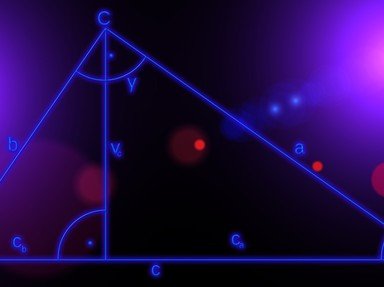Quiz Answer Key and Fun Facts
1. Euclid's triangle postulate was not accepted by other mathematicians and eventually gave rise to non-Euclidean geometry.
2. Generally speaking, there are three types of non-Euclidean geometry.
3. There is a maximum area of a triangle in hyperbolic geometry.
4. In hyperbolic geometry, there is a maximum length of a line.
5. You may have heard someone ask you to draw a triangle consisting of three right angles. Of course, in Euclidean geometry, this is an absurd idea. However, it is possible in elliptical geometry.
6. There can be more than one line connecting two points in elliptic geometry.
7. The Pythagorean Theorem holds true in at least one of the types of non-Euclidean geometry.
8. At very small scales, non-Euclidean geometry is essentially the same as Euclidean geometry.
9. There are no parallel lines in spherical geometry.
10. The maximum sum of angles in a triangle in elliptical geometry approaches 360°.
Source: Author
redsoxfan325
This quiz was reviewed by FunTrivia editor
crisw before going online.
Any errors found in FunTrivia content are routinely corrected through our feedback system.
